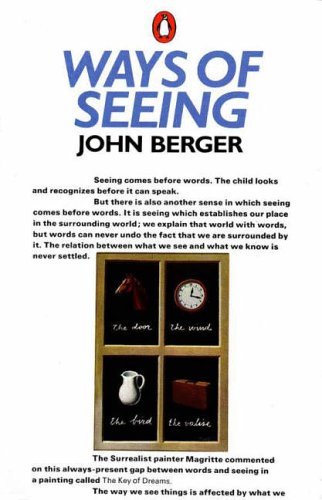Civilization
by Kenneth Clark
Ways of seeing
by John Berger
The Shock of the New
by Robert Hughes
![The Shock of the New by [Hughes, Robert]](https://images-na.ssl-images-amazon.com/images/I/41ISvHng3PL.jpg)

Ways of seeing, on the other hand, was a complete annoyance, and its writer the ultimate "wet blanket". I had never got so upset by a book, with my stomach literally turning with each turning of a page. Truth hurts; how I hate this naughty little messenger.
Ways of seeing are ways of questioning the conventional view of art, as represented by Kenneth Clark, which reminded me of how science was "indicted" by Yuval Noah Harari in "Sapiens: a brief history of mankind". In short, science is not "pure" and art is not "pure". The highest human achievements are tainted by human follies, may even be part of human follies. Art, Western art in particular, serves the powerful, the sexual fantasy of men and the market. The end.
"The Shock of the New" provided a historical narrative of how modern art has come to being. It's a fun book to flip through, if one has already become receptive to the apparent absurdity and craziness, which is modern art. The most rewarding thing is that I believe I've learned how to tell Picasso and Braque apart - look forward to testing this "skill" of mine in my future museum goings.
It should not have come as a surprise that art has evolved as the human history turns left and right, forward and backward, and become craziest in the twentieth century when humanity was in its most volatile, violent, confused and disillusioned period. But I had not been consciously mindful of this fact when I looked at artworks.
I also flipped through two more art books but didn't find the content particularly insightful to read carefully, one traced Picasso's life to account for his art; the other was a series of essays on a Miro exhibition of his large wall art.

